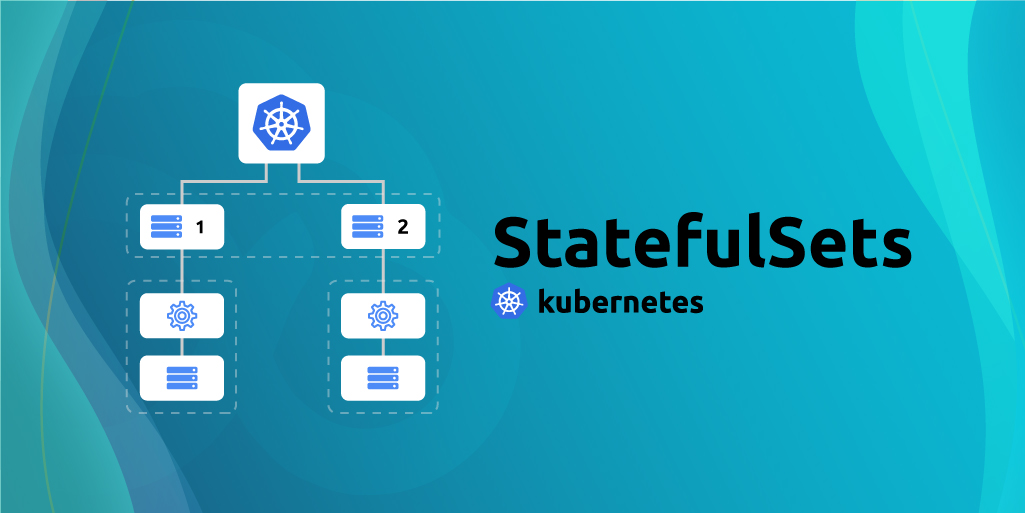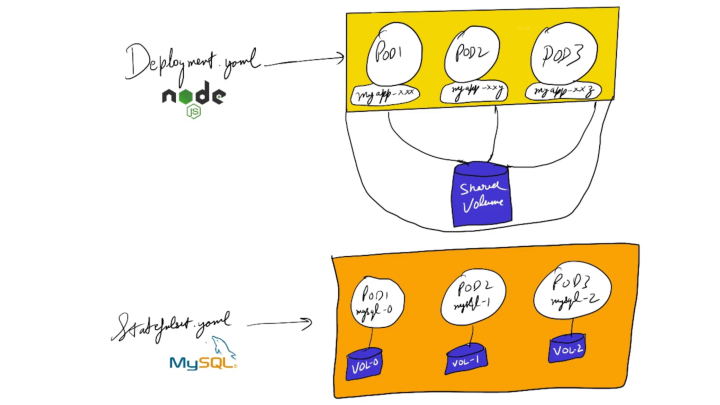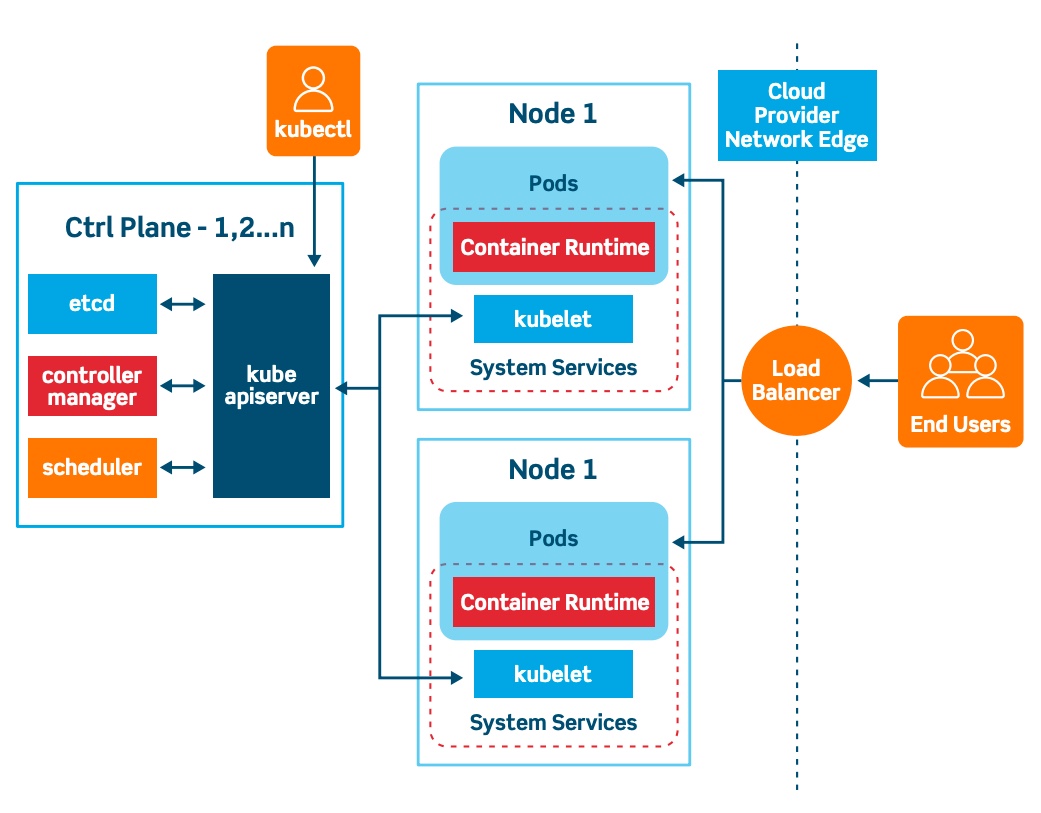Exploring the Unique Characteristics of Kubernetes StatefulSets
Kubernetes StatefulSets are a unique type of workload in the Kubernetes ecosystem, designed to manage stateful applications that require persistent storage, stable network identities, and ordered deployment and scaling. Unlike Deployments, which are primarily used for stateless applications, StatefulSets address the specific needs of stateful applications, such as databases, message queues, and distributed systems. One of the key features of Kubernetes StatefulSets is the ability to maintain a unique identity for each pod within the set. This is achieved through the use of a stable network identity, which ensures that each pod has a predictable and persistent network address, even in the event of a pod failure or scaling operation. This is particularly important for stateful applications that rely on consistent network connectivity to function correctly.
Another distinguishing characteristic of Kubernetes StatefulSets is the way they handle persistent storage. Each pod in a StatefulSet is associated with a Persistent Volume Claim (PVC), which provides a dedicated and persistent storage volume for that pod. This ensures that data is not lost when a pod is terminated or rescheduled, as the storage volume remains attached to the pod’s unique identity.
Understanding the unique characteristics of Kubernetes StatefulSets is crucial for effectively managing stateful applications in a Kubernetes environment. By leveraging the features of StatefulSets, such as stable network identities and persistent storage, developers and operators can build highly available and scalable applications that can withstand the dynamic nature of a Kubernetes cluster.
Designing Highly Available and Scalable Applications with StatefulSets
Kubernetes StatefulSets offer a powerful solution for building highly available and scalable stateful applications. One of the key benefits of using StatefulSets is the ability to maintain unique identities and stable network identities for each pod within the set. This is particularly important for applications that require consistent network connectivity, such as databases, message queues, and distributed systems. By leveraging the unique identity and network stability provided by Kubernetes StatefulSets, developers can ensure that their stateful applications can withstand the dynamic nature of a Kubernetes cluster. When a pod is terminated or rescheduled, its unique identity and network address are preserved, allowing the application to seamlessly continue its operations without disruption.
In addition to stable network identities, Kubernetes StatefulSets also provide persistent storage for each pod through the use of Persistent Volume Claims (PVCs). This ensures that data is not lost when a pod is terminated or rescheduled, as the storage volume remains attached to the pod’s unique identity. This feature is crucial for maintaining data integrity and consistency in stateful applications.
The ability to scale Kubernetes StatefulSets, both horizontally and vertically, is another key benefit for building highly available and scalable applications. Developers can easily add or remove pods from a StatefulSet, and the Kubernetes controller will ensure that the new pods are properly configured and integrated into the application’s overall architecture.
By understanding and leveraging the unique characteristics of Kubernetes StatefulSets, developers can design and deploy highly available and scalable stateful applications that can withstand the challenges of a dynamic Kubernetes environment. This can lead to improved application reliability, better data consistency, and more efficient resource utilization.
Implementing Stateful Applications with Kubernetes StatefulSets
Deploying stateful applications on Kubernetes can be a complex task, but Kubernetes StatefulSets provide a powerful and straightforward solution. In this section, we will guide you through the process of setting up and configuring Kubernetes StatefulSets to run your stateful applications. The first step in implementing a Kubernetes StatefulSet is to define the StatefulSet object. This object specifies the desired state of your application, including the number of replicas, the container image to use, and the persistent storage requirements. Here’s an example of a basic StatefulSet configuration:
yaml
apiVersion: apps/v1
kind: StatefulSet
metadata:
name: my-stateful-app
spec:
serviceName: my-stateful-service
replicas: 3
selector:
matchLabels:
app: my-stateful-app
template:
metadata:
labels:
app: my-stateful-app
spec:
containers:
– name: my-stateful-app
image: my-stateful-app:v1
volumeClaimTemplates:
– metadata:
name: data
spec:
accessModes: [“ReadWriteOnce”]
resources:
requests:
storage: 1Gi
In this example, we’ve defined a StatefulSet with three replicas, each with a persistent volume claim (PVC) of 1 GiB. The serviceName field specifies the name of the Headless Service that will be used to manage the network identities of the pods.
Next, you’ll need to create a Headless Service to manage the network identities of the pods in the StatefulSet. A Headless Service is a special type of Kubernetes Service that does not have a cluster IP address, but instead, it provides a stable network identity for each pod in the StatefulSet. Here’s an example of a Headless Service configuration:
yaml
apiVersion: v1
kind: Service
metadata:
name: my-stateful-service
spec:
clusterIP: None
selector:
app: my-stateful-app
ports:
– port
Scaling and Managing Kubernetes StatefulSets
Scaling Kubernetes StatefulSets is a crucial aspect of managing stateful applications in a dynamic environment. Unlike Deployments, which can be scaled up or down with relative ease, scaling StatefulSets requires careful consideration to maintain data integrity and consistency. When scaling a Kubernetes StatefulSet, the Kubernetes controller ensures that the new pods are properly configured and integrated into the application’s overall architecture. This includes assigning unique network identities, attaching persistent storage volumes, and ensuring that the application can seamlessly handle the changes.
Horizontal scaling of a Kubernetes StatefulSet involves adding or removing replicas, which can be achieved by modifying the replicas field in the StatefulSet specification. However, it’s important to note that the order in which pods are scaled is crucial. Kubernetes will scale the pods in reverse order, starting with the pod with the highest ordinal index. This ensures that the application can gracefully handle the changes and maintain data consistency.
Vertical scaling of a Kubernetes StatefulSet, on the other hand, involves modifying the resource requests and limits of the pods. This can be done by updating the container specifications in the StatefulSet definition. When vertically scaling a StatefulSet, it’s essential to ensure that the application can handle the changes in resource allocation without disrupting its operations.
Throughout the scaling process, maintaining data integrity and consistency is of utmost importance. Kubernetes StatefulSets provide mechanisms to ensure that data is not lost during scaling operations, such as the use of Persistent Volumes and the StatefulSet controller’s handling of pod failures.
By understanding the best practices for scaling Kubernetes StatefulSets, developers and operators can ensure that their stateful applications can adapt to changing demands and maintain high availability and reliability. This includes careful planning, monitoring, and testing to ensure that the scaling process does not introduce any data-related issues.
Handling Failures and Graceful Termination in StatefulSets
Dealing with failures and graceful termination of pods within a Kubernetes StatefulSet is a crucial aspect of managing stateful applications. Unlike Deployments, where pods can be easily replaced, the unique identities and persistent storage associated with StatefulSet pods require a more thoughtful approach to handling failures and terminations. The Kubernetes StatefulSet controller plays a vital role in managing pod failures and ensuring data consistency. When a pod within a StatefulSet fails or is terminated, the controller will attempt to reschedule the pod and ensure that it is properly configured and integrated into the application’s overall architecture.
One of the key strategies for handling failures in a Kubernetes StatefulSet is the use of Persistent Volumes (PVs) and Persistent Volume Claims (PVCs). By associating each pod with a dedicated PVC, the Kubernetes controller can ensure that the pod’s data is not lost when the pod is terminated or rescheduled. This helps maintain data integrity and consistency, even in the face of pod failures.
Additionally, Kubernetes StatefulSets provide mechanisms for graceful termination of pods. When a pod is scheduled for termination, the StatefulSet controller will first attempt to gracefully shut down the application running within the pod. This allows the application to perform any necessary cleanup or data synchronization tasks before the pod is terminated.
To further enhance the reliability and resilience of Kubernetes StatefulSets, developers can implement application-level strategies, such as leader election, distributed locking, and data replication. These techniques can help ensure that the application can withstand pod failures and maintain data consistency even in the face of unexpected events.
By understanding the role of the Kubernetes StatefulSet controller and implementing appropriate failure handling and graceful termination strategies, developers can build highly available and reliable stateful applications that can thrive in a dynamic Kubernetes environment.
Optimizing StatefulSet Performance and Resource Utilization
Optimizing the performance and resource utilization of Kubernetes StatefulSets is crucial for ensuring the efficient and cost-effective operation of your stateful applications. In this section, we’ll explore various techniques and best practices to help you achieve this goal. One of the key aspects of optimizing Kubernetes StatefulSets is managing resource requests and limits. By setting appropriate resource requests and limits for your StatefulSet pods, you can ensure that your application has the necessary resources to function effectively, while also preventing over-provisioning and wasted resources.
Another important consideration is pod affinity and anti-affinity. By leveraging pod affinity rules, you can ensure that your StatefulSet pods are scheduled on nodes that are best suited for their resource requirements. This can help improve overall application performance and reduce the risk of resource contention.
When it comes to storage optimization, Kubernetes StatefulSets provide several options to help you manage your persistent storage efficiently. For example, you can use storage classes to dynamically provision storage volumes with different performance characteristics, such as SSD or HDD-based storage. Additionally, you can explore techniques like storage compression and deduplication to reduce the overall storage footprint of your StatefulSet.
Monitoring and autoscaling are also crucial for optimizing Kubernetes StatefulSet performance and resource utilization. By monitoring key metrics, such as CPU and memory usage, you can identify opportunities for scaling your StatefulSet, either horizontally or vertically, to meet changing demand. Kubernetes provides built-in autoscaling capabilities, such as the Horizontal Pod Autoscaler (HPA) and Vertical Pod Autoscaler (VPA), which can help automate this process.
By implementing these optimization techniques, you can ensure that your Kubernetes StatefulSets are running efficiently, with minimal resource waste and maximum performance. This can lead to cost savings, improved application reliability, and better overall user experience.
Integrating StatefulSets with Other Kubernetes Features
Kubernetes StatefulSets are a powerful tool for managing stateful applications, but they become even more versatile when integrated with other Kubernetes features. In this section, we’ll explore how Kubernetes StatefulSets can be combined with various Kubernetes components to create more robust and comprehensive solutions for your stateful applications. One key integration point is with Kubernetes Volumes. By leveraging Persistent Volumes (PVs) and Persistent Volume Claims (PVCs), Kubernetes StatefulSets can provide reliable and persistent storage for your stateful applications. This allows you to decouple the storage requirements from the application itself, making it easier to manage and scale your storage infrastructure.
Another important integration is with Kubernetes Networking. Kubernetes StatefulSets rely on Headless Services to provide stable network identities for each pod in the set. By integrating StatefulSets with Kubernetes Networking features, such as Ingress and Service Mesh, you can create more sophisticated networking solutions for your stateful applications, including load balancing, traffic routing, and service discovery.
Kubernetes Ingress is a particularly useful feature for integrating with Kubernetes StatefulSets. By using Ingress, you can expose your stateful applications to the outside world, providing a consistent and scalable entry point for your users or other services. This can be especially beneficial for applications that require stable network identities, such as databases or message queues.
Finally, Kubernetes StatefulSets can be integrated with other Kubernetes features, such as Horizontal Pod Autoscaler (HPA) and Vertical Pod Autoscaler (VPA), to create more dynamic and responsive stateful applications. By leveraging these autoscaling capabilities, you can ensure that your StatefulSets are able to adapt to changing workloads and resource requirements, further enhancing the overall reliability and performance of your stateful applications.
By exploring these integration points, you can unlock the full potential of Kubernetes StatefulSets and create more robust, scalable, and maintainable solutions for your stateful applications. This can lead to improved application performance, better resource utilization, and a more streamlined Kubernetes ecosystem.
Real-World Use Cases and Best Practices for Kubernetes StatefulSets
Kubernetes StatefulSets have proven to be a valuable tool for managing a wide range of stateful applications in real-world scenarios. In this section, we’ll explore some common use cases and best practices for leveraging Kubernetes StatefulSets to their full potential. One of the most prominent use cases for Kubernetes StatefulSets is in the deployment and management of databases. Databases, such as MySQL, PostgreSQL, and MongoDB, are inherently stateful applications that require stable network identities, persistent storage, and ordered scaling. Kubernetes StatefulSets provide the perfect solution for these requirements, ensuring that each database instance is properly configured and integrated into the overall application architecture.
Another common use case for Kubernetes StatefulSets is in the deployment of message queues and distributed systems. Applications like RabbitMQ, Apache Kafka, and Apache ZooKeeper rely on the unique characteristics of StatefulSets to maintain consistent messaging and coordination across multiple instances.
When deploying stateful applications with Kubernetes StatefulSets, it’s essential to follow best practices to ensure the reliability and scalability of your solutions. This includes:
Carefully planning and designing your StatefulSet configurations, taking into account factors like resource requirements, storage needs, and network topology.
Implementing robust monitoring and alerting mechanisms to quickly identify and address any issues that may arise with your StatefulSet-based applications.
Regularly testing your StatefulSet-based applications, including simulating failures and scaling operations, to ensure that they can withstand the dynamic nature of a Kubernetes environment.
Leveraging Kubernetes features like Persistent Volumes, Headless Services, and Ingress to create comprehensive and integrated solutions for your stateful applications.
Continuously optimizing the performance and resource utilization of your Kubernetes StatefulSets, using techniques like resource requests and limits, pod affinity, and storage optimization.
By following these best practices and leveraging the unique capabilities of Kubernetes StatefulSets, you can build highly available, scalable, and reliable stateful applications that can thrive in a Kubernetes-based infrastructure.





